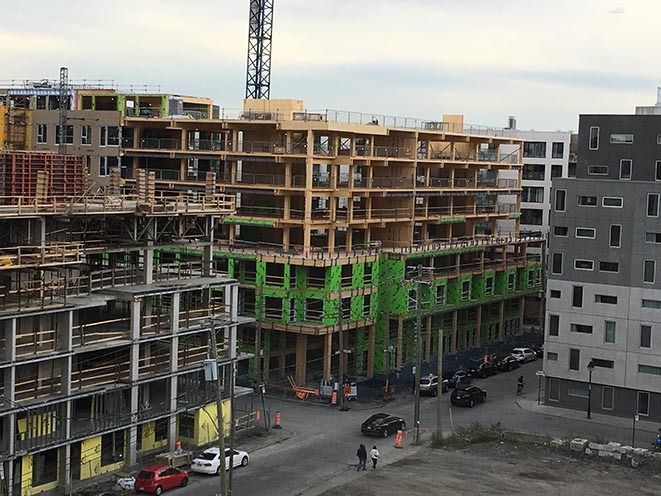Returning to the Basic Principles of the Building Envelope

The featured image was bought from Istock.com. Copyrights.
Evolution of the Building Envelope
Before the war, houses had little or no insulation. Air could flow in and out freely. Houses were not very comfortable, but certain problems we are facing today were not an issue back then. The energy crisis of the 1970s changed that. Greater emphasis was put on insulating homes to save on heating costs, which led to problems of moisture condensation in the walls. Toward the end of the ’80s and early ’90s, problems with water ingress began. In fact, damage associated with water ingress has increased to such an extent that it now represents 60% of all insurance claims.
Alongside this evolution, companies have been attempting to innovate or improve the performance of their products in order to meet ever more demanding energy standards. These products do not always require the same installation conditions and are not necessarily compatible with one another. When their particularities are poorly communicated or misunderstood, the task becomes more difficult for designers who want to implement these innovations and even more so for site inspectors, who are more conservative and resistant to building changes or innovations. Consequently, buildings are in regular need of repairs due to basic design defects or to some components that were poorly installed. Nowadays, innovation in product design and envelope systems is evolving faster than the pertaining regulation.
All new construction products must be evaluated by accredited organizations like the Canadian Construction Materials Centre (CCMC).
To avoid problems when integrating new products or systems into a building and to maximize overall energy performance, a building must be considered as a whole, holistically, and the basic principles of building science must be followed so that all its components and systems work properly and harmoniously. For example, how to build an air barrier with all its connections or a vapour barrier? How to promote drainage and avoid water ingress and air leakage? This is done by better controlling heat, air and moisture transfers in the building envelope.

Research in Building Science
Projects are often initiated at the request of an industry that cannot solve a specific problem or lacks the facilities or resources to conduct intensive research. Other times, it is the researchers that approach an industry to explore other avenues. The developed products are tested under worst-case scenarios and at an accelerated pace, taking into account the real and extreme conditions they may face. Accredited laboratories and organizations in North America must be used for registration and marketing. Recommendations are made regarding product installation and limitations. For example, an adequate product for New Mexico may not be suitable for Vancouver because the drying capacity is not the same.
Since it is impossible to test a product in all conditions, a digital model is first validated with the test results and used in parametric studies. These studies extend the results to other climatic conditions. Applied and targeted research leads to the improvement, development and innovation of building products and systems.
However, in the current socio-economic and energy context, it is important to guide and frame research with the goal of building affordable, energy-efficient and low-cost houses that minimize greenhouse gas emissions.


